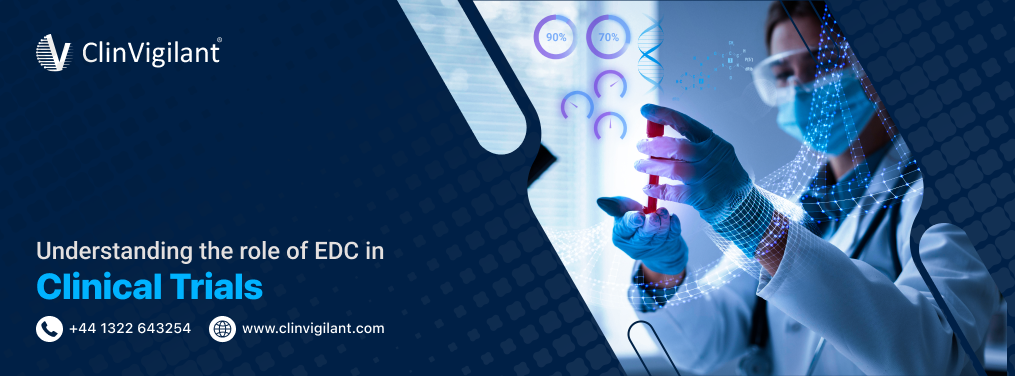
Electronic data capture (EDC) has become an integral part of running clinical trials efficiently and effectively. EDC systems enable faster, more accurate, and cost-effective data collection and management throughout a trial. In this blog post, we’ll explore what exactly EDC entails, the key benefits it offers, where the technology may head in the future, and frequently asked questions about leveraging EDC in Clinical Research.
What Is EDC in Clinical Trials?
Electronic data capture (EDC) in Clinical Research refers to using electronic systems and methods to collect clinical trial data, as opposed to the traditional paper-based data collection. EDC covers processes such as building electronic case report forms (eCRFs), designing study databases, integrating data validation checks, enabling secure investigator site access for entering data, and providing audit trail tracking.
EDC platforms allow clinical trial administrators, investigators, study coordinators, monitors, data managers and biostatisticians to seamlessly input, manage, integrate and analyze study data through a centralized system accessible via the web. This replaces having to physically collect and coordinate paper source documents, case report forms and data clarification forms between sites and sponsors. The studys database serves as the eCRF, integrating edit checks, range checks and discrepancy management.
The data robustness and workflow efficiencies EDC systems enable make them a standard component of the vast majority of clinical trials today. EDC has shifted from an option to a necessity for competitive, high-quality trials that hope to leverage analytics and dashboards to derive insights.
Key Benefits of EDC in Clinical Trials
Transitioning from traditional paper processes to EDC delivers transformative advantages at every stage of your clinical trials. The key benefits include:
- Real-time data access
EDC allows clinical trial administrators and monitors to access up-to-date data from all participating investigative sites through a single centralized platform. This enables understanding performance metrics, subject enrollment status, adverse event patterns and data trends in real-time rather than waiting for paper forms to be sent, faxed and processed in batches.
- Improved data quality
Electronic Data capture in clinical trials platforms automatically run edit checks on entered data to catch issues early. Things like invalid values, inconsistencies, omissions, and protocol deviations can get flagged right away for clarification rather than coming to light months later after a database lock. This vastly improves overall data quality.
- Accelerated database locks
Electronic data collection significantly accelerates trial closure processes like database locks and unblinding analysis datasets. When data gets entered electronically from the very start, it avoids lengthy data entry and query resolution processes involved with paper forms at the backend. Studies leveraging EDC have reported reducing locked database preparation by 2-3 months.
- Enhanced efficiency
Eliminating redundant manual processes reduces administrative time, effort and resourcing needs. Team members can rely on system workflows for standard operations rather than having to coordinate them manually. Things like form routing, discrepancy management, signature approvals and batch uploading reports all happen electronically rather than through emails, faxes and phone calls.
- Lower costs
Combining accelerated trial timelines, improved quality and leaner process workflows, EDC drive significant cost savings for sponsors. A recent Tufts study found EDC delivers average per patient per visit cost savings between $535-$817 depending on trial phase. That translates to hundreds of thousands in savings for larger mid-late phase trials even when accounting for upfront EDC system costs.
The Future of EDC in Clinical Trials
EDC in clinical research has already transitioned from a cutting edge innovation to a must-have foundational platform – but where will the future take it? Exciting new capabilities leveraging connected devices, sensors, wearables, mobile health apps and advanced analytics techniques point to some possibilities:
- Direct data integration from biosensors, apps and devices for continuous remote patient monitoring rather than periodic in-clinic assessments. Imagine leveraging data from smartwatches, blood pressure monitors, exercise trackers and more
.
- Incorporating wearable sensors, computer vision and AI to enable virtual decentralized trials with sophisticated automated data collection minimizing site visits.
- Next generation “smart” eCRFs personalized to patient characteristics and customized on the fly based on previous inputs rather than static one-size-fits all paper forms.
- Predictive analytics to flag at risk patients, probable adverse events, optimal dosing times and more to support optimized interventions.
- “Digital twins” of entire trials simulated using advanced analytics to identify bottlenecks, predict issues and enhance planning.
- Seamless integration interlinking related data across operational systems (CTMS, RTSM, IWRS etc.), existing EMR records and post-market sources.
While paper likely won’t get eliminated entirely in all trials yet, these innovations show the vast untapped potential still ahead!
Conclusion
Implementing robust electronic data capture delivers immense advantages over paper-based clinical trial data processes – transforming quality, efficiency, insights and cost savings. EDC has firmly become the standard for state of the art trials, playing an integral role across early and late phase studies.
And emerging techniques like decentralized trials, predictive analytics and digital twin modelling will only expand EDC’s future capabilities even further. With healthcare striving towards increasing personalization and automation everywhere, EDC serves as a mission critical platform enabling that through better leveraging data in R&D as well.
Frequently Asked Questions
Q: What are some key things to consider when selecting an EDC vendor?
A: When vetting and comparing EDC solutions, essential factors to assess cover security compliance, overall uptime and resilience guarantees, integration flexibility, and data visualization plus analytics tools available. Also ensure adequate implementation expertise and training capabilities.
Q: Will EDC significantly increase clinical trial costs due to added technology requirements?
A: While there are some upfront system and training costs, studies have consistently proven EDC achieves tremendous cost savings in the long run from increased efficiency, improved quality and faster study completion. Many vendors also offer EDC access on Software as a Service model, avoiding large initial system investments.
Q: Can EDC be leveraged beyond clinical trials into continuous post-market evidence generation?
A: Absolutely – the same innovative eCRF and data automation capabilities building unique competitive R&D advantages can significantly enhance post-market safety signal monitoring, longitudinal patient registries and progressive evidence coverage requirements. Seamlessly extending EDC in this manner enables long-run value realization.
Q: What is the difference between EDC and a CTMS? When do I need both?
A: While clinical trial management systems (CTMS) cover operational aspects like site performance tracking, resource management and monitoring logistics – EDC focuses purely on streamlining electronic data capture and analytics for scientific outcomes. Many trials, especially larger later phase ones, require both CTMS and EDC capabilities. Vendors often offer both within an integrated eClinical Suite.
Q: Can EDC integrate seamlessly with existing hospital EMR solutions?
A: Interfacing capabilities to ingest or export data into existing Electronic Medical Record solutions depends significantly on technical flexibilities of the specific EMR platform. Most advanced EDCs provide open integration APIs to enable interfacing wherever possible, but some custom development effort may be required still.

Leave A Comment